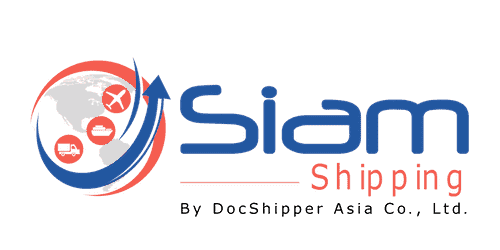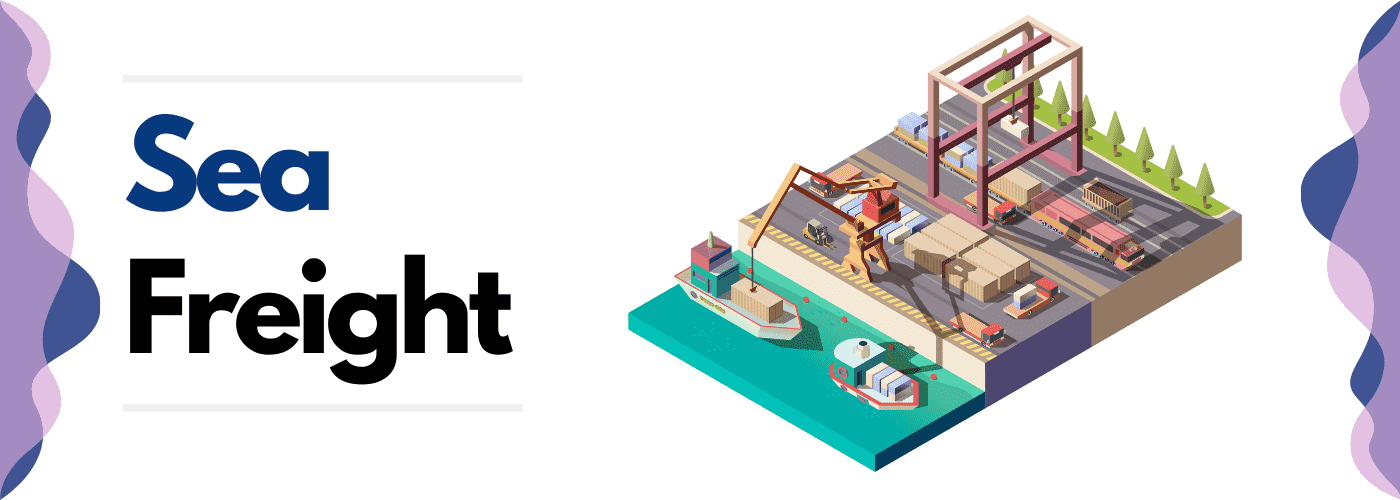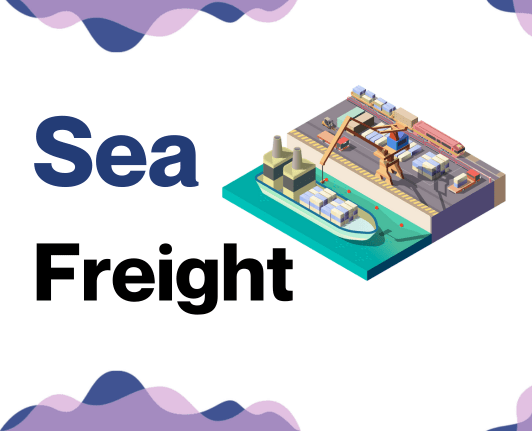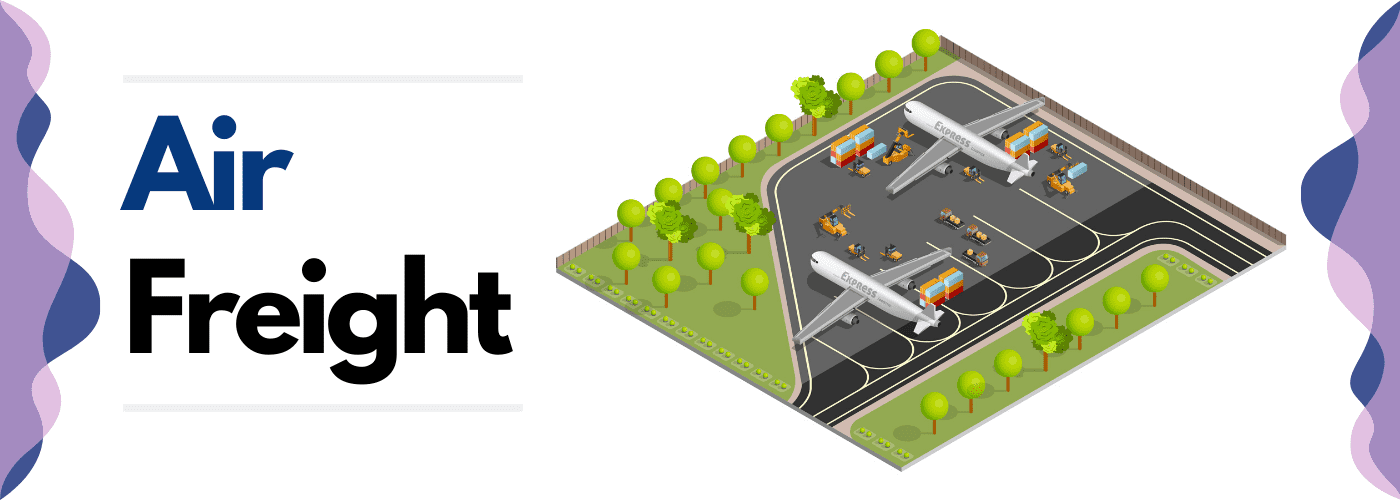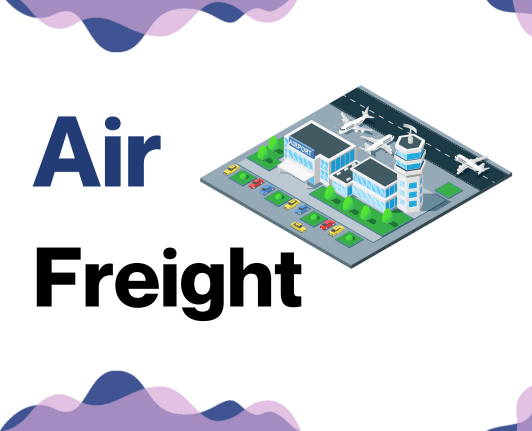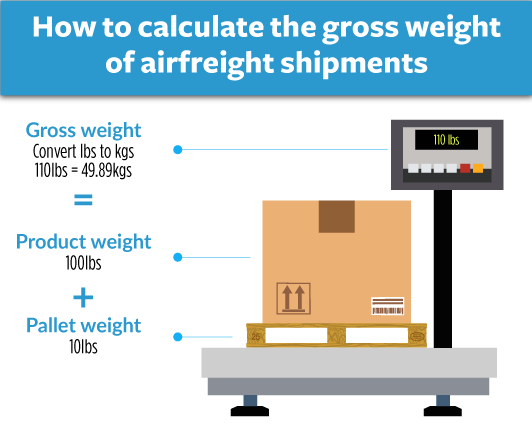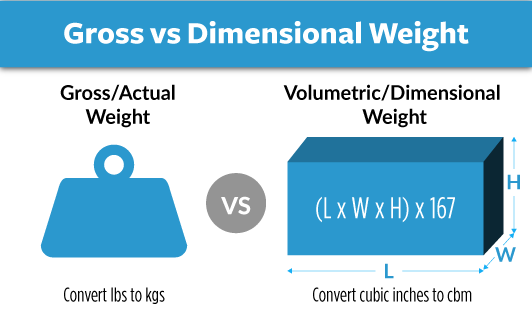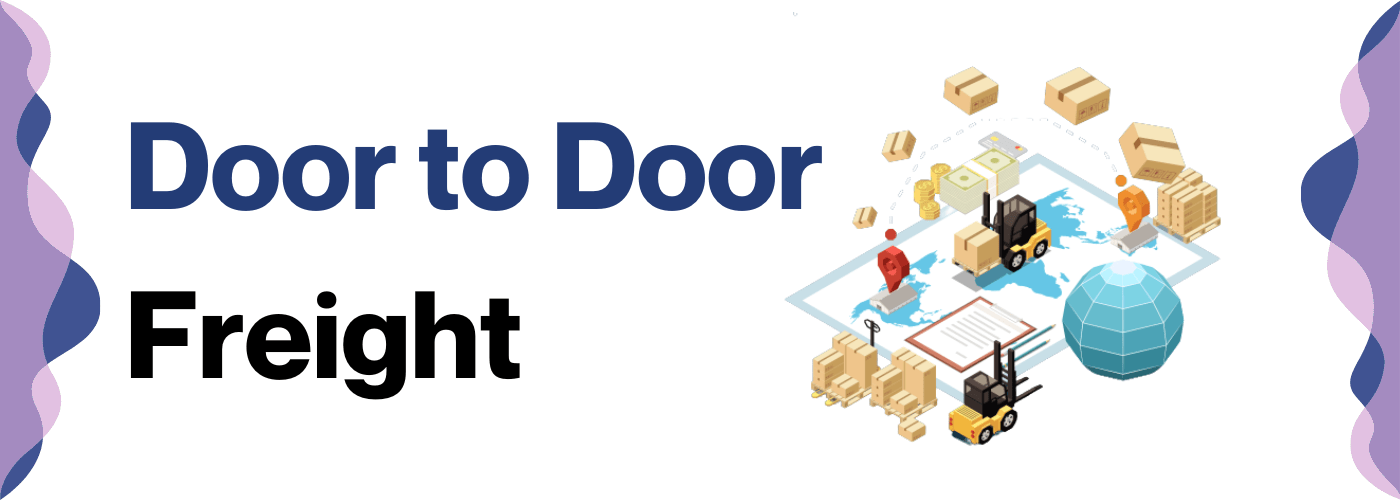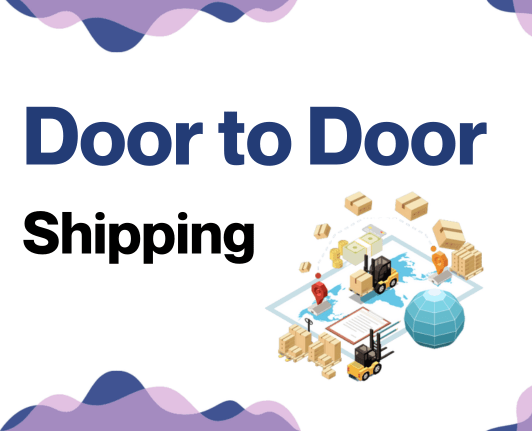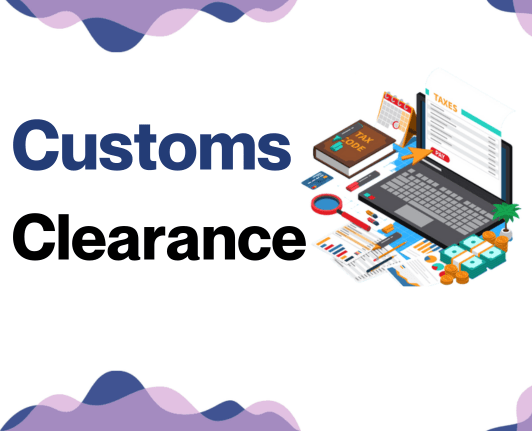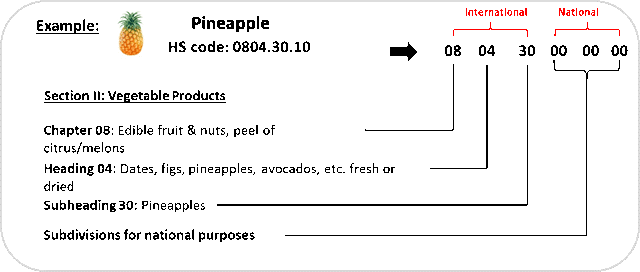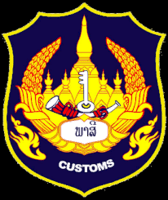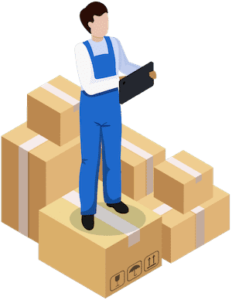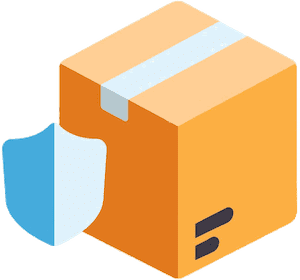Do you think shipping goods between Thailand and Laos is akin to steering through a spicy Tom Yum soup? We get it, because wrestling with rates, transit times, and custom regulations can feel just as intense. In this comprehensive guide, we'll demystify the process for you, breaking down everything you need to know about different freight options, their pros and cons, customs clearance procedures, and the nuances of duties and taxes.
Expect tailored advice that'll help you navigate the intricate rules and regulations, easing your business's shipping concerns. If the process still feels overwhelming, let DocShipper handle it for you! We are a dedicated international freight forwarder helming your every shipping need, turning those spicy challenges into a bowl of success!
Which are the different modes of transportation between Thailand and Laos?
Choosing between road, air, sea or rail for shipping goods from Thailand to Laos? It's like picking the quickest route for your morning commute: you need to consider distance, traffic and road conditions. Thailand and Laos, being neighbors, share a direct border, much like houses on the same street. This makes road transport, akin to walking next door, a practical and often faster solution.
But remember, every delivery is unique, so your optimal route might be different. We're here to help you decode these logistics puzzles and tailor a method that delivers efficiently and economically for your business.
How can Siam Shipping help?
Shipping goods from Thailand to Laos can be confusing, but you're not alone. DocShipper is your partner throughout this journey. We handle everything from transport organization to customs clearance procedures. One quick click or call, and our team is ready to aid you with a free estimate in less than 24 hours. Got questions? Our consultants are available to answer them for free. Reach out today!
Siam Shipping Tip: Consider ocean freight if:
- You are shipping large volumes or bulky items, as sea freight offers the most space at a cost-effective rate.
- You're not racing against the clock. Ocean freight takes its sweet time, especially when stacked up against other transport methods.
- Your supply chain is linked up with big-name ports. Think of it as the VIP lane on the maritime superhighway.
Sea freight between Thailand and Laos
Courting the challenging tides of ocean shipping between Thailand and Laos can often feel like solving a tricky jigsaw puzzle. In this bustling trade alliance, your cargo sails from Thailand's key industrial hub, Laem Chabang Port, across the Gulf of Thailand and the South China Sea, to ultimately dock at Vung Ang Port in Laos, connecting vital economic centers. While adopting sea freight might remind you of a slow-motion ballet, its cost-effectiveness for high-volume goods transforms it into a wallet-friendly choice.
Yet, as many shippers echo, foggy inexperience often breeds missteps and burned fingers. Like trying to decode a foreign menu, businesses find complexities stitched into every stage of the shipping process between these two nations.
Fear not, though! Our guide is your chef, explaining each dish to steer you clear of bitter experiences. Imminent are sections brimming with best practices and sought-after specifications, tailored to untangle your challenges with a gentle, guiding hand. Lightning-fast customs clearance and mistake-free paperwork are just a page away! So, shall we embark on this enlightening voyage?
Main shipping ports in Thailand
Laem Chabang Port
Location and Volume: Located in the province of Chonburi, Thailand, Laem Chabang Port is one of the largest deep-sea ports in the region. It's crucial for international maritime trade, with a shipping volume of over 18 million TEUs in 2022.
Key Trading Partners and Strategic Importance: Laem Chabang Port is a significant hub for trade with China, Japan, and the United States. It's used extensively for heavy industries, including automotive and petrochemicals.
Context for Businesses: If you're aiming to establish or grow trade relationships with East Asia and the Americas, Laem Chabang Port might be crucial. Its high shipping volume suggests efficient cargo processing, which can minimize delays.
Bangkok Port
Location and Volume: Situated on the Chao Phraya River in Khlong Toei District of Bangkok, the Bangkok Port was once Thailand's primary port, with a shipping volume of nearly 8,7 million TEU.
Key Trading Partners and Strategic Importance: Its primary trading partners include China, the United States, and Malaysia. Owing to its central location, Bangkok Port is instrumental for domestic and regional trading.
Context for Businesses: India and Malaysia are among Bangkok Port's key trading partners. If you're planning to expand in these markets, using Bangkok Port might be vital for your strategy, given its advantageous location.
Map Ta Phut Port
Location and Volume: Located in Rayong Province, Map Ta Phut Port is the largest port in Thailand in terms of cargo volume, with a figure surpassing 16 million metric tonnes.
Key Trading Partners and Strategic Importance: This port's key trading partners comprise of numerous countries within the region, the United States, and Australia. This port specializes in industrial and petrochemical shipping due to its proximity to the Map Ta Phut Industrial Estate.
Context for Businesses: If you're in the petrochemical industry or any industry that requires significant cargo handling capacity, Map Ta Phut Port's impressive cargo volume aligns well with your requisites.
Sattahip Port
Location and Volume: Located in the Sattahip district of Chonburi province, the Sattahip Port is a significant naval port servicing the Eastern Seaboard. It processed nearly 1,1 million TEUs.
Key Trading Partners and Strategic Importance: Sattahip Port's essential trade partners include Australia, Vietnam, and Indonesia. It's ideally located to support the Eastern Economic Corridor (EEC) initiative.
Context for Businesses: Situated near the center of the ASEAN region, Sattahip Port could be crucial to businesses targeting Southeast Asian markets, leveraging the benefits of the Eastern Economic Corridor (EEC).
Songkhla Port
Location and Volume: Located in Southern Thailand, Songkhla Port is a key port for the region, particularly for the fishing industry. The annual cargo volume stood at approximately 3 million tonnes of cargo.
Key Trading Partners and Strategic Importance: Songkhla Port fosters trade with neighboring countries like Malaysia, Singapore, and Indonesia. It's a vital link for Southern Thailand's economic activities, including fishery, rubber, and oil palm industries.
Context for Businesses: If your supply chain requires access to the plentiful resources of Southern Thailand or markets in nearby Malaysia, Singapore, and Indonesia, Songkhla Port can be a beneficial node.
Siracha Harbour
Location and Volume: Situated in Si Racha District of Chonburi Province, Siracha Harbour is a niche port primarily used for specialized trade, processing over 4,5 million tonnes of cargo.
Key Trading Partners and Strategic Importance: Siracha Harbour bolsters trade ties with regional countries along with the United States and Australia. It's crucial for specific industrial sectors like agriculture and automobiles.
Context for Businesses: If your business is associated with specialized cargo like grains or automotive parts, Siracha Harbour, with its well-equipped facilities and strategic location, might be pivotal to your operations.
Main shipping ports in Laos
Port of Vientiane
Location and Volume: Located in the capital city of Laos, Vientiane, this port serves as a principal gateway to the country's international trade. Though not as voluminous as other major Asian ports, the port boasts a substantial shipping volume due to its central location and accessibility.
Key Trading Partners and Strategic Importance: Given the port's proximity to Thailand, significant trade exists between the two countries. In addition, there are established trade routes connecting Vientiane with other regional partners including China, Vietnam and Cambodia. The port’s position along the Mekong River enhances its strategic importance by providing a direct waterway route to key markets in Southeast Asia.
Context for Businesses: If you're looking to penetrate the Southeast Asian market, the Port of Vientiane can play a crucial role in your shipping strategy. It offers a direct waterway route to larger Asian markets, thereby enabling efficient and cost-effective shipping.
Savan Port
Location and Volume: Savan Port is situated in the Special Economic Zone of Savannakhet province, which is Laos’s leading destination for foreign investment. Despite being a landlocked port, it plays a significant role in handling goods movement in and out of the country.
Key Trading Partners and Strategic Importance: The port has a geo-strategic advantage due to its location on the East-West Economic Corridor, connecting Vietnam’s eastern coast with Myanmar’s western coast. This strategic position has made it a central hub for trade with Thailand, Vietnam and China.
Context for Businesses: If your shipping needs involve frequent transfer of goods across multiple countries in the region, Savan Port's strategic location on the East-West Economic Corridor makes it an ideal choice. Taking advantage of its central position can streamline your shipping processes and help unlock efficiencies in your supply chain.
Should I choose FCL or LCL when shipping between Thailand and Laos?
Embarking on an ocean voyage between Thailand and Laos? Your choice between Full Container Load (FCL) or Less than Container Load (LCL), also known as consolidation, could be a game-changer in your shipping journey. This decision not only affects the wallet but also puts a timeline - fast or slow - on your shipment. But fear not, we are here to unravel the mystery - casting light on their contrasts so you can make an informed decision tailored to your business. So, buckle up and let's explore these two sea-faring heavyweights for a more successful shipping process.
LCL: Less than Container Load
Definition: Less Container Load (LCL) shipping refers to an arrangement where multiple shippers share space in a single container. It's ideal for transporting smaller volumes of goods.
When to Use: LCL is the right choice when your shipment is not large enough to warrant the use of an entire container on its own, typically when it's smaller than 13 -15 CBM. This makes it a flexible and economical choice for businesses with lower volume needs.
Example: Consider you are a Thailand-based business exporting artisanal merchandise to Laos. Your shipment only occupies 10 CBM. Choosing LCL allows you to share container space with other shippers, thereby reducing your freight costs.
Cost Implications: Using LCL shipping can result in lower freight costs because you pay only for the space your goods occupy. However, it's worth noting LCL shipments may have additional handling charges due to the consolidation and deconsolidation processes. Consequently, getting an LCL shipping quote before committing to this option can provide a more accurate picture of total costs. Still, in most cases, LCL freight remains an affordable choice for smaller shipments.
FCL: Full Container Load
Definition: Full Container Load (FCL) shipping between Thailand and Laos is a method where your cargo exclusively occupies a 20'ft or 40'ft container.
When to Use: FCL shipping comes into play when your cargo is more than 13/14/15 cubic meters (CBM). It becomes the most cost-effective and secure way since your stuff won't be sharing space with others, enhancing the security from the origin to the destination.
Example: Let's say you're a furniture manufacturer in Thailand with a bulk order to fulfill in Laos. Your shipment occupies more than 15 CBM, which would require at least two shared containers if opting for LCL. In such a scenario, choosing FCL would mean using only one 40'ft container keeping your goods safe and consolidated, and potentially decreasing your shipping costs.
Cost Implications: FCL shipping quote remains relatively constant regardless of your goods' volume. The cost varies, primarily based on whether you choose a 20'ft container or 40'ft one. Keep in mind, while the FCL container could be more costly up front, the price per unit decreases with volume, making it the cheaper option for larger shipments.
Unlock hassle-free shipping
Struggling to choose between consolidation or a full container for shipping between Thailand and Laos? Let DocShipper steer the way. We are committed to making cargo shipping a breeze for businesses. From size and weight of your goods, to cost-effectiveness and timeliness, numerous factors dictate the best option. Our ocean freight experts are ready to assist in finding the perfect fit for your needs. Interested? Kickstart your hassle-free shipping journey - request a free estimation today!
How long does sea freight take between Thailand and Laos?
The average shipping time between Thailand and Laos by sea freight greatly varies. Transit times are influenced by factors such as the specific ports used, the weight of goods, and the nature of goods being transported. For a more precise estimate that suits your unique shipping requirements, consider speaking with a freight forwarder, such as DocShipper, who can provide you with a tailored quote.
Average Sea Freight Transit Times:
| Thailand Ports | Laos Ports | Average Shipping Time (Days) |
| Bangkok | Vientiane | 12 |
| Laem Chabang | Savannakhet | 13 |
| Map Ta Phut | Pakse | 13 |
| Songkhla | Luang Prabang | 10 |
*Note: Laos is a landlocked country, so sea ports are not applicable. The ports mentioned are the closest inland terminals from Thailand.
Remember that these are average times and actual travel durations might vary due to many factors. Always consult with your freight forwarder for the most accurate and updated information.
How much does it cost to ship a container between Thailand and Laos?
Understanding the cost to ship a container between Thailand and Laos isn't as straightforward as quoting a single figure. Ocean freight rates and shipping costs can vary widely due to several key factors. Influence comes from the Point of Loading, Point of Destination, the specific carrier used, the type of goods being shipped, and even monthly market fluctuations. Hence, casting a price range is a complex task.
Nevertheless, rest assured our team of shipping specialists is ready and eager to delve into the specifics of your case, helping pinpoint a tailored, competitive rate by understanding your unique needs. Your one-of-a-kind shipping solution is just a consultation away!
Special transportation services
Out of Gauge (OOG) Container
Definition: Out of Gauge or OOG containers are unique seafaring solutions for cargo that exceeds the dimensions of standard shipping containers.
Suitable for: This method is perfect for large, non-standard size items that can't fit within the traditional container parameters.
Examples: OOG container shipping is often utilized for industrial equipment, large machinery, or components of infrastructure projects like turbines or construction beams.
Why it might be the best choice for you: If your business specializes in oversized items or Out of gauge cargo, the flexibility of OOG containers can offer a great transportation solution between Thailand and Laos.
Break Bulk
Definition: Break Bulk is a shipping method for goods that are loaded individually rather than in containers. The goods are often shrink-wrapped onto pallets for convenience.
Suitable for: It's an ideal method for handling loose cargo load and heavy, awkwardly sized items that aren't container-friendly.
Examples: Items such as timber, construction equipment, or machinery parts are often shipped using Break Bulk methods.
Why it might be the best choice for you: If your cargo involves a variety of goods with different sizes and weights, Break Bulk shipping might be more efficient and cost-effective for you.
Dry Bulk
Definition: Dry Bulk refers to the transportation of homogeneous commodities in large quantities, packed directly into the ship's hold.
Suitable for: This option is suitable for un-packaged goods like coal, grains, or minerals.
Examples: Businesses in mining, farming, or those distributing large volumes of a single type of goods such as sand or rice would use Dry Bulk shipping.
Why it might be the best choice for you: If you're transporting high volumes of a specific commodity that doesn't require packaging, Dry Bulk can offer a cost-saving advantage.
Roll-on/Roll-off (Ro-Ro)
Definition: Roll-on/Roll-off, or Ro-Ro, shipping involves cargo that rolls onto a ro-ro vessel and off at the port of delivery, hence its namesake. It's the method of choice for items with wheels.
Suitable for: Vehicles like cars, trucks, tractors, or even heavy equipment that can move on their own with wheels are ideal for this method.
Examples: Car manufacturers or industries dealing with large wheeled machinery would typically employ Ro-Ro shipping.
Why it might be the best choice for you: If your business revolves around automotive or heavy machinery sectors, Ro-Ro shipping offers ease of handling, making it a fuss-free choice.
Reefer Containers
Definition: Reefer Containers are refrigerated containers designed to carry perishable goods at specific temperatures.
Suitable for: It is best for foods, pharmaceuticals, or any other products that require a temperature-controlled environment during transit.
Examples: Businesses in agribusiness, such as fruit exporters or seafood suppliers, or pharmaceutical companies are typical users of Reefer Containers.
Why it might be the best choice for you: If your cargo involves temperature-sensitive items, Reefer Containers ensure a fresh delivery from Thai to Laotian soil.
Remember, each shipping method has its advantages depending on the nature of your goods. Whether you prefer an OOG container, Ro-Ro vessel, or any other method, our team at DocShipper can provide expert guidance. Feel free to contact us for a free shipping quote in less than 24h to start your journey towards successful shipping.
Siam Shipping Tip: Consider Air freight if:
- Time's ticking and you can't wait. Air freight is like the express train of shipping; it's the quickest way to get your stuff from A to B.
- You're not shipping a warehouse. If your cargo is under 2 CBM, air freight is a snug fit for your smaller haul.
- Your supply chain ends somewhere off the beaten path. Airports are everywhere, so you can get your goods to those hard-to-reach spots.
Air freight between Thailand and Laos
Air freight between Thailand and Laos is quick and dependable, turning even the most pressing deadlines into achievable goals. And if you're shipping small, valuable items, the price tag is easier to swallow than you might think - think of it as sending a love letter rather than a bulky novel. It's ideal for items like electronics or luxury fashion, which demand both speed and security.
However, it's not a one-size-fits-all solution. Many businesses stumble by ignoring key factors. Mis steps like using the wrong weight formula when pricing their goods can inflate costs beyond belief. Or vilifying best practice norms can make their shipping journey rougher than a ride on a bumpy gravel road. Stay tuned to shake off these pitfalls and steer your air freight journey seamlessly.
Air Cargo vs Express Air Freight: How should I ship?
Choosing the right shipping method for your Thailand-to-Laos business needs can feel like a puzzle. But don't worry, we're here to clear up the confusion. Express air freight gets your goods to their destination using a dedicated plane, whereas air cargo utilizes shared spaces in regular airline flights. Think of it like taking a taxi versus the bus; both will get you there, but the journey and the costs vary. This guide will help you make that precise decision.
Should I choose Air Cargo between Thailand and Laos?
Choosing air cargo for shipping from Thailand to Laos can be beneficial, especially if your shipment ranges from 100/150 kg (220/330 lbs). Carriers like Thai Airways and Lao Airlines stand out, consistently delivering reliability and cost-effectiveness. Remember though, transit times can be longer due to their fixed schedules. Balancing these factors, air cargo may suit your budget and business needs perfectly.
Should I choose Express Air Freight between Thailand and Laos?
Express air freight is a unique, expedited service utilizing cargo-only planes, perfect for transporting smaller shipments, typically under 1CBM or 100/150kg (220/330lbs). This can be the ideal choice if you're shipping goods between Thailand and Laos that need a quick, secure delivery. With reliable carriers like FedEx, UPS, and DHL, your shipment's delivery is fast and fully traceable, providing peace of mind for your business operations. Choose express air for time-sensitive or high-value goods for an efficient, seamless shipping process.
Main international airports in Thailand
Suvarnabhumi International Airport
Cargo Volume: Handles more than 97,774 million tons of cargo annually.
Key Trading Partners: Major trading partners include China, Japan, the USA, and countries throughout the European Union.
Strategic Importance: As the hub for Thai Airways, Bangkok Airways, and Orient Thai Airlines, Suvarnbhumi plays a key role in facilitating regional and international trade routes.
Notable Features: The Novotel hotel and the airport's location just 25 km east of downtown Bangkok could be convenient for business travelers.
For Your Business: With its high cargo volume, wide network of destinations, and modern facilities, Suvarnbhumi may suit businesses engaged in high-volume or time-sensitive trade.
Don Mueang International Airport
Cargo Volume: Handles around 35,000 tons of cargo annually.
Key Trading Partners: Primarily serves the ASEAN countries, China, and India.
Strategic Importance: It hosts many low-cost carriers, which could be a boon for small and medium-sized businesses on a budget.
Notable Features: The airport is a hub for Nok Air and Thai AirAsia.
For Your Business: Ideal if you are trying to reduce shipping costs or if your key markets are within the region.
Utapao-Rayong-Pattaya International Airport
Cargo Volume: Rapidly growing, with an aim to handle 30,000 tons of cargo annually.
Key Trading Partners: China, Japan, and ASEAN countries.
Strategic Importance: It's being developed as a third alternative gateway to Bangkok, which could help decongest the city's other airports.
Notable Features: The airport is part of the Eastern Economic Corridor development plan.
For Your Business: Utapao could be your choice if you plan on participating in the growing economic activity in the Eastern Economic Corridor.
Phuket International Airport
Cargo Volume: Handled roughly 25,000 tons of cargo.
Key Trading Partners: Primary connections are with China, Australia, and European nations.
Strategic Importance: As the second busiest airport in Thailand, it allows easy access to southern Thailand, a hub for agriculture and fishing industries.
Notable Features: The airport possesses a Customs Free Zone and a cargo village, facilitating efficient cargo handling.
For Your Business: If your business integrates with the agriculture or fishing sector, Phuket could provide you with quick and efficient shipping routes.
Chiang Mai International Airport
Cargo Volume: Handled approximately 18,000 tons of cargo.
Key Trading Partners: Primarily serves China, South Korea, and ASEAN countries.
Strategic Importance: As the third largest airport in Thailand, Chiang Mai serves the growing economies of northern Thailand and lower Mekong region.
Notable Features: It's the hub for Bangkok Airways, Thai AirAsia, and Thai Airways.
For Your Business: If your supply chain operations are centered in northern Thailand or the lower Mekong region, Chiang Mai could be ideally suited for you.
Main international airports in Laos
Wattay International Airport
Cargo Volume: The only international airport that handles cargo in Laos, Wattay Airport has seen consistent growth in cargo volume in the past decade. In 2019, the airport reached a volume of over 16,000 tonnes.
Key Trading Partners: Key trading partners include China, Thailand, Vietnam, Japan, and Korea.
Strategic Importance: Its location in Vientiane, the capital city of Laos, gives this airport a strategic advantage in connecting to other major cities in Southeast Asia and East Asia, important destinations for imported goods.
Notable Features: Wattay International has one cargo terminal and three runways that can accommodate large cargo planes. Moreover, the airport is part of a broader development plan that aims at enhancing its capabilities.
For Your Business: If your business is looking to tap into the Southeast Asian market, leveraging the Wattay Airport for your freight-forwarding needs could provide a straightforward and efficient channel to not only Laos but its neighboring countries as well.
Luang Prabang International Airport
Cargo Volume: While smaller than Wattay, this airport is nonetheless critical and handles a respectable amount of cargo every year.
Key Trading Partners: Major trading partners remain similar to Wattay's, focusing on East and Southeast Asia, especially China, Thailand, Japan, and South Korea.
Strategic Importance: Located in the northern part of the country, this airport provides you with a different access point that might align better with certain shipping routes.
Notable Features: Luang Prabang Airport recently underwent a significant expansion featured with new facilities, including an increased runway length to accommodate larger aircraft.
For Your Business: For businesses looking at Northern Laos or needing a second port of entry within the country, Luang Prabang is an excellent choice. It can also work as an alternative in case of high traffic or any issues at Wattay.
How long does air freight take between Thailand and Laos?
Shipping between Thailand and Laos by air freight typically takes approximately 1-2 days. However, please note that transit times are not absolutely fixed. They can fluctuate depending on several factors, including the specific airports of departure and arrival, the weight of your cargo, and the type of goods you're shipping. For the most accurate, customized information, it is highly recommended to consult with a freight forwarding expert such as DocShipper.
How much does it cost to ship a parcel between Thailand and Laos with air freight?
The cost to ship an air freight parcel between Thailand and Laos can range widely, averaging around $3 to $8 per kg. However, an exact rate is challenging to provide upfront, as factors such as the distance from departure and arrival airports, parcel dimensions, weight, and nature of goods significantly influence the total price.
Rest assured, our team tailors each quote according to these variables to secure you the best possible rate. Rates quoted are specific to each individual shipment's requirements to ensure fairness and transparency. Contact us to receive a free quote in less than 24 hours.
What is the difference between volumetric and gross weight?
Gross weight refers to the actual physical weight of the shipment, including the packaging and pallet weight. On the other hand, volumetric weight, or dimensional weight, is a pricing technique used for commercial freight transport, which uses an estimated weight that is calculated based on the length, width and height of a package.
In air cargo, gross weight is straightforward, measured using scales and recorded in kilograms (kg). To convert it to pounds (lbs), simply multiply the kg value by 2.205.
Volumetric weight, on the other hand, is computed differently in air cargo and express air freight services. For air cargo, it is calculated as (Length x Width x Height in cm) / 6000. In express air freight services, the divisor used is 5000, not 6000.
Let's consider a hypothetical shipment with these dimensions: 1m length (100cm), 1m width (100cm), and 1m height (100cm). Its gross weight is 20 kilograms. Translating this into lbs gives us 44.09 lbs.
Calculating the volumetric weight for air cargo would give: (100 x 100 x 100) / 6000 = 166.67 kg (or 367.41 lbs). For express air freight, the equation becomes (100 x 100 x 100) / 5000 = 200 kg (or 440.92 lbs).
Understanding these weights is crucial as freight charges are determined based on the higher value between gross weight and volumetric weight. This could significantly affect the final cost of your shipment, thus an accurate assessment is essential for budgeting.
Siam Shipping Tip: Consider Door to Door if:
- You value convenience and want a seamless shipping process, as door-to-door takes care of every step from pickup to delivery.
- You appreciate having a single point of contact, as door-to-door services typically provide a dedicated agent to handle all aspects of the shipment.
- You want less transitions for your cargo, reducing the risk of damage or loss, as door-to-door minimizes transitions between different modes of transport.
Door to door between Thailand and Laos
International door-to-door is the full-service delivery model where your freight is collected from a specific location in Thailand and delivered right to your chosen address in Laos. With this approach, you’ll dodge a multitude of logistics hassles, enjoy a single point of contact, and potentially save more time and money. Ready to learn more about making your move seamless? Let's dive in!
Overview – Door to Door
Are you striving to circumvent the complexities of shipping from Thailand to Laos? Door to door service might just be your resolute ally. A favorite among DocShipper's clients, this logistics solution eliminates the headache of transportation coordination and customs clearance. While it can sometimes be costly compared to other methods, its stress-free nature and time efficiency make it worthwhile. Not to forget, it streamlines the multifaceted shipping process into a smooth, single point of contact experience. So, sit back and let professionals transport your cargo seamlessly from one door to another.
Why should I use a Door to Door service between Thailand and Laos?
Fed up with the logistical acrobatics involved in freight transportation? Well, here's your life-saver: Door to Door service between Thailand and Laos. Here are five reasons why you should consider this.
1. Stress-free Logistics: No need to juggle different transportation modes anymore. With Door to Door, your goods are picked up right from your place and delivered to the desired destination. This 'one-point-contact' approach reduces uncertainties and hassle.
2. Guarantee Timely Delivery: Have an urgent consignment? The Door to Door service understands timelines. Offering seamless integration of different transport modes, it ensures the cargo reaches the destination in the speediest manner possible.
3. Special Care for Complex Cargo: Got a shipment so unique it gives regular freight services a head-scratch moment? With specialized handling and more attentive service, Door to Door can take care of your oddly-sized, fragile, or extremely high-valued goods with expertise.
4. Convenience: Door to Door service not only involves the transport of goods but also custom clearance and local trucking until your final destination. Go from 'Huh, what's a Bill of Lading?' to 'Ah, I've got some time for a latte now!'
5. Comprehensive Coverage: Don't fret over the transport route details. This service assures your shipment is well monitored throughout its journey, lending you peace of mind.
So when you want to switch from logistical stress to a carefree shipment experience, Door to Door service is just the Jack of all trades you need! It's like having your very own personal freight forwarder, but without the paperwork and the hefty salary!
DocShipper – Door to Door specialist between Thailand and Laos
Experience stress-free, door-to-door shipping from Thailand to Laos with DocShipper. Our expert team handles each aspect of your goods' transportation -- packing, transport, customs -- across all shipping methods. We uniquely assign an Account Executive to your project, ensuring quality and personalized communication. No tedious tasks for you. Request a free estimate and have it delivered within 24 hours, or consult our seasoned experts at no cost. Turn complex shipping into a simple, seamless experience with us.
Customs clearance in Laos for goods imported from Thailand
Navigating the labyrinth of customs clearance in Laos for goods imported from Thailand can be a daunting task. This process, which involves getting goods approved to enter a country, is riddled with potential hurdles like unexpected fees and bureaucratic snags that could put your cargo at risk of getting stuck in customs purgatory. Mistakes can happen, but understanding customs duties, taxes, quotas, and licenses is key to a smooth importing journey.
In the following sections, we'll delve deeper into these areas to help you navigate through the potential pitfalls. Fear not, DocShipper is here to guide you. We can assist with all aspects of the process for any goods shipped from anywhere. Need to estimate your project's budget? Contact our team with the goods' origin, value, and HS Code. These three things are the first step in moving forward with an estimate.
How to calculate duties & taxes when importing from Thailand to Laos?
Unraveling the complexity of estimating duties and taxes for your imports from Thailand to Laos begins with gathering the essential information. The cornerstones in this calculation are the Country of Origin, the Harmonized System (HS) Code of your products, the Customs Value, the Applicable Tariff Rate, along with any extra taxes and fees that might be applicable.
So, what's the initial step in this? Digging deep and corroborating the country where your goods have been manufactured or produced - it's not just about the dispatch point, it’s about where the creation process took place.
Step 1 - Identify the Country of Origin
Knowing the product's origin country is a critical first move. Here's why it matters for your import process:
1. Trade Agreements: Laos and Thailand have several bilateral and regional free trade agreements. Understanding how these apply directly affects your import costs, making your calculations more accurate.
2. HS Codes: The Harmonised System code, crucial for declaring goods at customs, can sometimes vary depending on the originating country.
3. Import Restrictions: Certain goods or components from specific countries might face restrictions or need additional paperwork and inspections.
4. Validity of Certificate of Origin: This certificate is key to prove your product's origin. If invalid or incorrect, it could lead to delays or added costs.
5. Anti-Dumping Duties: These exist to protect domestic industries. If goods from one country become too cheap, these extra taxes come into play to balance prices.
So, to avoid unexpected surprises at customs and to ensure accurate duty calculation, always identify your product's country of origin. Visit Laos' customs website for official trade agreement texts, import restrictions, and useful tools to get your HS code. Happy shipping!
Step 2 - Find the HS Code of your product
The Harmonized System (HS) Code is a standardized system of names and numbers to classify traded products. It's used by customs authorities around the world to identify products and apply tariffs. As a shipper, knowing your product's HS code is crucial for the smooth movement of your goods across borders.
Often, the simplest way to get the HS code of your product is by asking your supplier. They usually have deep knowledge of the products they're exporting and the associated regulations.
If this isn't an option, here's a step-by-step guide to help you find it:
1. Visit the Harmonized Tariff Schedule website.
2. Type in the name of your product in the search bar and hit search.
3. Look at the Heading/Subheading column – your product’s HS code will be listed there.
A word of caution: accuracy is key when determining your HS code. A mistake in the code could lead to shipment delays, possible fines, and complications with customs. So, take your time and ensure the code is correct.
Here's an infographic showing you how to read an HS code. It can assist you in understanding how codes are structured and what each number stands for, helping you to verify that you've found the correct code.
Step 3 - Calculate the Customs Value
Many businesses are confused by the difference between product value and customs value when importing goods from Thailand to Laos, especially since these figures can differ significantly. In essence, the customs value is the total sum of the product price, international shipping costs and insurance fees (CIF).
For instance, if you've purchased goods for $5000, paid $2000 for shipping and $100 for insurance, your customs value is not just the $5000 you paid for the goods - it's $7100 ($5000 + $2000 + $100). It's crucial to calculate this accurately as customs duties in Laos are applicable on this comprehensive CIF value. A minor mistake could end up causing a big dent in your budget!
Step 4 - Figure out the applicable Import Tariff
An import tariff is essentially a tax imposed on goods imported from foreign countries, affecting the cost of your shipped products. Laos, for instance, uses an import tariff system that aligns with the Harmonized System (HS).
To determine the applicable tariff for your product:
First, you'll need to have your product's HS code, which you identified earlier. Say, for instance, your goods are classified under HS code 1701, which represents cane sugar.
Next, consult the Thailand Customs Department website or appropriate trade tool to find the specific rate. In Laos, this may require reaching out to the Laos Customs Department.
Consider a practical example. Suppose your shipment's CIF (Cost, Insurance & Freight) value is $20,000, and the tariff rate for your HS code is 5%. Thus, the import duty to be paid would be calculated as follows:
Import duties = CIF value x tariff rate
= $20,000 x 5/100
= $1,000
So, to get your goods into Laos, you can expect to pay around $1,000 in import duties. Understanding this process and your business's requirements can support smoother, more predictable import processes.
Step 5 - Consider other Import Duties and Taxes
Understanding the additional import fees when importing goods from Thailand to Laos can be a challenging task. Besides the standard tariff rate, which varies by product and value, other import duties might apply depending on the product's nature and its country of origin.
Consider the excise duty, an additional charge imposed on specific kinds of goods like luxury items or gasoline. The rate totally depends on the nature of your goods. For instance, if your goods are luxury watches, the excise duty might be around 15-20% (note: example rate–actual rates may vary).
Then there's the anti-dumping tax. If your product's price is lower in the exporting country (Thailand, in your case) than the price in the importing country (Laos), this tax may apply to protect local industries from unfair pricing competition.
Moreover, remember the Value-Added Tax (VAT). In Laos, the current standard VAT rate is 10% but could change. The VAT base includes the product cost, insurance, freight, and import duties. This means, if you've paid $1,000 to import goods to Laos, you'll need to pay a VAT of $100 (10% of $1,000).
Please note, these are just examples - actual rates may vary. Always consult your customs broker or relevant authorities to get the most accurate rates and avoid surprises in your budget.
Step 6 - Calculate the Customs Duties
In understanding the costs of shipping goods from Thailand to Laos, calculating customs duties is a critical step. This is typically comprised of the customs value of the goods, value-added tax (VAT), anti-dumping taxes and Excise Duty if applicable.
For example, suppose your goods have a customs value of $2000 with a customs duty of 5%. Your customs duty will be $100. If VAT isn't applicable, that's your final duty cost.
Assuming the same $2000 value for another shipment but with a 10% VAT rate, your customs duty will first be calculated (5% of $2000 = $100). VAT is then applied to the sum of the customs value and the customs duty ($2100), yielding an additional $210. Therefore, your total duty cost would be $310.
In a more complex scenario with the same original customs value, duty, and VAT, and including a 15% anti-dumping tax and 20% Excise Duty, the calculations add up. Following our previous steps, your customs duty is $100 and VAT would be $210. Furthermore, the anti-dumping tax of $300 and Excise Duty of $400 apply. This totals to $1,010 in customs duties and taxes.
As your trusted international freight forwarder, DocShipper can handle this complex process for you, ensuring you don’t overpay. Pen down your details and our experts will send you a detailed quote for your customs clearance needs within 24 hours. Shipping worldwide has never been this easy and affordable.
Does DocShipper charge customs fees?
DocShipper, an authorized customs broker in Thailand and Laos, won't charge you for customs duties - these go directly to the government. Instead, our task is to ensure your goods clear customs smoothly, and for that, we charge a customs clearance fee. Importantly, we furnish you with documents from the customs office, providing proof that duties paid align exactly with government charges, ensuring transparency in your shipping costs. It's like when you hire an accountant to handle your taxes - you pay them for their professional service, but the taxes themselves go straight to the government.
Contact Details for Customs Authorities
Thailand Customs
Official name: The Customs Department of Thailand
Official website: www.customs.go.th/
Laos Customs
Official name: Laos Customs Department
Official website: www.mof.gov.la/index.php/en/custom-department/
Required documents for customs clearance
Understanding the paperwork jungle for customs clearance can be confusing and time-consuming. In this section, we'll decode important documents like the Bill of Lading, Packing List, Certificate of Origin, and Documents of conformity (CE standard). These are key to smooth and hassle-free shipments, so you can focus on what matters: driving your business forward.
Bill of Lading
Understanding the Bill of Lading (BOL) is crucial when shipping goods from Thailand to Laos. This official document serves as proof for ownership transition, making it a 'must-have' during customs clearance. You might also explore its digital counterpart — the 'telex release,' which streamlines the shipping process by eliminating the need for physical documents. If you're dealing with air cargo, the Air Waybill (AWB) plays a similar role.
One quick tip: Double-check all details on your BOL or AWB, as any discrepancy may cause costly delays. Remember, whether it's a pack of electronics flying to Thailand or a cargo vessel full of manufacture goods destined for Laos, these documents are your lifeline in smooth customs handling.
Packing List
In the bustling international trade between Thailand and Laos, your Packing List is your guiding star. Imagine it as the all-knowing compass that charts your shipment's journey. Whether you're shipping by sea or air, it's indispensable. This document lists all the goods, their net and gross weight, and package types in your shipment—right from the delicate crystalware to sturdy machinery parts.
Miss a single detail, and you can stumble into customs issues. For instance, inadequate descriptions can delay your shipment at Thailand’s Laem Chabang port or at Vientiane airport in Laos. Ensuring your Packing List is accurate and comprehensive is a responsibility that lies squarely on your shoulders as the shipper. So, keep it meticulous to ensure a smoother journey for your goods. Your effort here saves you time, money, and potential stress later. Now, ready up that Packing List and get set for a successful shipment adventure!
Commercial Invoice
Navigating customs between Thailand and Laos? Your Commercial Invoice is your map. It's a detailed rundown of what you're shipping: product type, quantity, price, terms of sale, and the parties involved. Customs teams in both countries rely on it to calculate and apply duties. Fudging details? Not worth it, since discrepancies can lead to delays or penalties. Insiders tip – ensure consistency across your documents. If your invoice says you're shipping 50 toolkits but the packing list reports 45, expect hold-ups. Upshot? Accuracy saves time and money. Stay honest, stay detailed, and your goods will travel smoothly from Bangkok to Vientiane.
Certificate of Origin
In freight forwarding, the Certificate of Origin (CO) often acts as your passport, paving the way for smooth customs clearance between Thailand and Laos. It's a key document that announces the birthplace of your goods, and yes, it matters greatly! For instance, if you're shipping rattan furniture crafted in Surat Thani, your CO lets customs know it's truly 'Made in Thailand'.
Why is this crucial? Laos grants preferential duty rates for certain products from Thailand under ASEAN trade agreements. So having a Thailand-stamped CO could mean a cheaper custom bill, making your rattan pieces more competitive in the Laotian market. Remember, clarity saves you money and time in this logistics journey.
Get Started with Siam Shipping
Navigating customs can be a labyrinth of complex procedures and paperwork. Why not allow DocShipper to be your guide? We specialize in managing the entire customs clearance process, ensuring smooth and speedy delivery. Say goodbye to customs confusion, and hello to hassle-free shipping. Ready for a seamless shipping experience between Thailand and Laos? Get a free quote from us in less than 24 hours. Let's get started!
Prohibited and Restricted items when importing into Laos
Understanding what items are off-limits or tightly controlled is crucial for a smooth import operation into Laos. Ignorance can lead to costly delays or penalties. We're here to help you avoid these obstacles by shedding light on Laos' intricate set of rules on prohibited and restricted imports.
Restricted Products
If you're shipping to Laos, you should note that the following items are restricted and require special licenses or permits:
- Alcoholic beverages: You must apply for a license from the Ministry of Industry and Commerce.
- Weapons and Ammunitions: To get approval, you'll need to contact the Ministry of Public Security.
- Pharmaceuticals and Cosmetics: For these, the Food and Drug Department under the Ministry of Health offers licenses on their website.
- Used vehicles: The Ministry of Finance oversees this. You can apply for a permit from their website.
- Tobacco products: The Ministry of Finance also covers this. You can visit their website for more information.
- Live Animals and animal products: You'll want to touch base with the Ministry of Agriculture and Forestry.
Please always double-check latest regulations and official websites, as the requirements and restrictions can change without notice. Remember, correctly obtaining these licenses and permits will ensure a smooth customs clearance process; you wouldn't want your shipment to be held up unnecessarily.
Prohibited products
- Narcotics and psychotropic substances
- Military weapons, ammunition, and explosives
- Counterfeit goods
- Pornographic materials and obscene objects
- Radioactive materials
- Antiques or art objects that are part of the national heritage
- Endangered species of wildlife, alive or dead, and products thereof
- Toxic and hazardous waste materials
- Products containing materials harmful to humans, animals, and the environment
- Gambling tools and equipment
- Wireless radio equipment not approved by the Ministry of Post and Telecommunications
- Any other items that are prohibited by any Lao laws and regulations
Are there any trade agreements between Thailand and Laos
Yes, an advantageous Free Trade Agreement (FTA) exists between Thailand and Laos under the ASEAN Free Trade Area (AFTA). This treaty significantly reduces customs duties, making your shipping ventures between these nations less costly. Moreover, the upcoming Laos-Thailand railway line could usher in faster, more economical freight options. So, whether you're exporting textiles from Laos or importing electronic goods into Thailand, these trade arrangements will likely simplify your business operations and open up new opportunities.
Thailand - Laos trade and economic relationship
Nestled in the heart of Southeast Asia, Thailand and Laos have a rich tapestry of shared history and interconnected economics. This relationship flourished with the signing of the ASEAN Free Trade Agreement, turbocharging their bilateral trade which reached $6.17 billion in 2019.
Prominent sectors in this exchange are energy, agriculture, and manufacturing, with key commodities like electrical equipment, machinery, and rice. Thai investments in Laos are particularly remarkable in the energy sector, with ventures like Nam Theun 2 Power Project significantly contributing to Laos' development.
Polygonal economic ties have been solidifying; Thailand emerged as Laos' second-largest investor with a total investment of approximately $4.9 billion in 2019. Also, in 2021, Thailand's data was reported at 341,152.687 USD th. Moreover, Thailand and Laos aim to strengthen economic cooperation and achieve the bilateral trade target of $11 billion by 2025. This bilateral trade story is a microcosm of growth, collaboration, and shared prosperity, clearly demonstrating the power of geographic proximity and mutual economic dependency.
Your Next Step with Siam Shipping
Struggling with the complexities of shipping goods from Thailand to Laos? Let DocShipper take the helm! Avoid headaches from customs clearance, duties, and transport organization. We're the experts that make freight forwarding hassle-free, no matter the shipping method. Why wait? Get in touch to simplify your shipping needs today.
Additional logistics services
Discover how DocShipper can streamline your entire supply chain process, from initial sourcing to final delivery, going beyond mere shipping and customs. Let's unlock hassle-free, integrated logistics solutions together!
Warehousing and storage
Locating reliable warehousing in the Thailand-Laos logistics corridor can be tricky business. Add to that, precision control over conditions like temperature for sensitive goods, and the challenge intensifies. Case in point: Your Thai durian shipment needing cool storage to maintain optimal freshness. Glide through such hurdles with our dedicated warehousing solutions. More info on our dedicated page: Warehousing.
Packaging and repackaging
Shipping between Thailand and Laos? Your package integrity matters. Promising peace of mind, our packaging and repackaging service ensures your products, whether delicate ceramics or robust machinery, reach their destination safe and undamaged. Think of a reliable agent as your safety belt in transit, safeguarding your cargo at all stages. For instance, eco-friendly repackaging for your organic cosmetics? We've got you covered. Explore more about our bespoke solutions on our dedicated page: Freight packaging.
Cargo insurance
In the unpredictable world of shipping, transport insurance acts as your safety net, covering any surprises that mother nature may throw your way. Unlike fire insurance, which only covers fire-related damages, transport insurance extends to damages from a wider variety of incidents during transit. Picture this, your container has been damaged by a sudden overpowering wave at sea; this is where cargo insurance comes in, covering losses that fire insurance won't. Be proactive and prevent financial losses today. More info on our dedicated page: Cargo Insurance.
Supplier Management (Sourcing)
Expanding your business activity between Thailand and Laos? DocShipper's Supplier Management service can be your ace card. Our skilled team helps you cut through language barriers, finds suitable suppliers in Asia and East Europe, and shepherds you through the procurement process. Imagine connecting and trading smoothly with overseas manufacturers, eliminating risks, and achieving cost-effectiveness. Sounds interesting? More info on our dedicated page: Sourcing services.
Personal effects shipping
Moving from Thailand to Laos with hefty boxes of personal possessions? No worries! We specialize in shipping those bulky, delicate bits safely. Picture your grand piano or mammoth-sized vintage mirror reaching Laos in pristine condition - that's the expertise we bring. Rolled-up carpets? They're a breeze for us. Learn the nitty-gritty on our dedicated page: Shipping Personal Belongings.
Quality Control
Quality control isn't just a buzzword. It's the thin line between customer satisfaction and brand damage, especially when shipping from Thailand to Laos. Let's say your goods include handicrafts - without regular inspections during manufacturing, you risk product inconsistency that could disappoint buyers. Our in-depth Quality Inspection ensures every item upholds your high standards, safeguarding your reputation. More info on our dedicated page: Quality Inspection.
Product compliance services
Product compliance is critical for hassle-free shipping. Having your goods tested in a laboratory for adherence to destination regulations eliminates unforeseen issues. Say, for instance, you're shipping electronic devices. If they meet the needed safety standards, it smooths the customs clearance process. We facilitate these lab tests, ensuring your product aligns perfectly with these standards, simplifying your logistics journey. Interested? More info on our dedicated page: Product compliance services.
FAQ | Freight Shipping between Thailand and Laos | Rates - Transit times - Duties and Taxes
What is the necessary paperwork during shipping between Thailand and Laos?
For a smooth shipping procedure from Thailand to Laos, some essential paperwork is required. As DocShipper, we manage the essential ones for you - whether it's the bill of lading for sea freight or the air way bill for air shipments. On your end, be ready to provide us with the packing list and the commercial invoice. Do note that based on the nature of your goods, additional documents such as Material Safety Data Sheets (MSDS) or specific certifications may be required. Our goal is to make the process seamless, ensuring all paperwork is correctly completed and submitted.
Do I need a customs broker while importing in Laos?
Indeed, when importing to Laos, utilizing a customs broker can be a decisive factor due to procedural intricacy and mandatory documents requirement. We at DocShipper understand this aspect remarkably well. That's why, for the majority of shipments, we take on the role of your representative at customs. We navigate the complex processes on your behalf, ensuring your shipments meet all regulatory demands without compromising time-efficiency. Seeking guidance from a customs broker like us offers the peace of mind that your product will overcome border challenges smoothly and timely.
Can air freight be cheaper than sea freight between Thailand and Laos?
It's tricky to broadly compare the costs of air and sea freight from Thailand to Laos because they fluctuate depending on numerous factors including the route, weight, and volume of the shipment. That being said, if your cargo is less than 1.5 Cubic Meters or 300 kg (about 660 lbs), air freight might start looking more financially feasible. As part of our extended service at DocShipper, you can rely on your dedicated account executive, who will analyze your specific needs and offer the most cost-effective and efficient freight option for you.
Do I need to pay insurance while importing my goods to Laos?
While insurance isn't a mandatory requirement for importing goods to Laos, we at DocShipper strongly recommend securing insurance for your shipment. This becomes particularly vital in the international shipping arena due to the increased risk of incidents that could lead to damage, loss, or theft of your goods. While we always work towards minimizing any such risks, insurance can provide an extra layer of protection and peace of mind throughout your shipping journey.
What is the cheapest way to ship to Laos from Thailand?
For the best balance of cost and distance, road freight is the cheapest method to ship goods from Thailand to Laos. At DocShipper, we manage all the tedious customs and administrative procedures for you. We ensure a smoother, streamlined experience to facilitate your trade endeavors without disrupting your budget.
EXW, FOB, or CIF?
The best choice between EXW, FOB, or CIF indeed depends on your relationship with the supplier. Keep in mind, however, that your supplier may not be an export logistics expert. That's where we at DocShipper step in. Most often, suppliers sell under the EXW or FOB terms, covering charges to their factory door or the terminal of origin. Our role is to smoothen your international freight processes and any destination procedures. We'll take it from there, providing a door-to-door service for optimal convenience and efficiency.
Goods have arrived at my port in Laos, how do I get them delivered to the final destination?
When shipping under the CIF/CFR incoterms, a local freight forwarder or custom broker in Laos will assist with clearing goods at the terminal, settling import charges, and final delivery. If you're looking for a comprehensive solution, our DocShipper team offers DAP incoterms, managing the entire process for you. To arrange this, consult with your dedicated account executive.
Does your quotation include all cost?
Absolutely, at DocShipper, we aim to maintain transparency in our pricing. Our quotes cover all costs except for duties and taxes at the destination, which may vary. To alleviate any concerns about surprise expenses, we offer assistance in estimating these additional costs. Just get in touch with your dedicated account executive. Rest assured, there won't be any concealed fees in our dealings.
